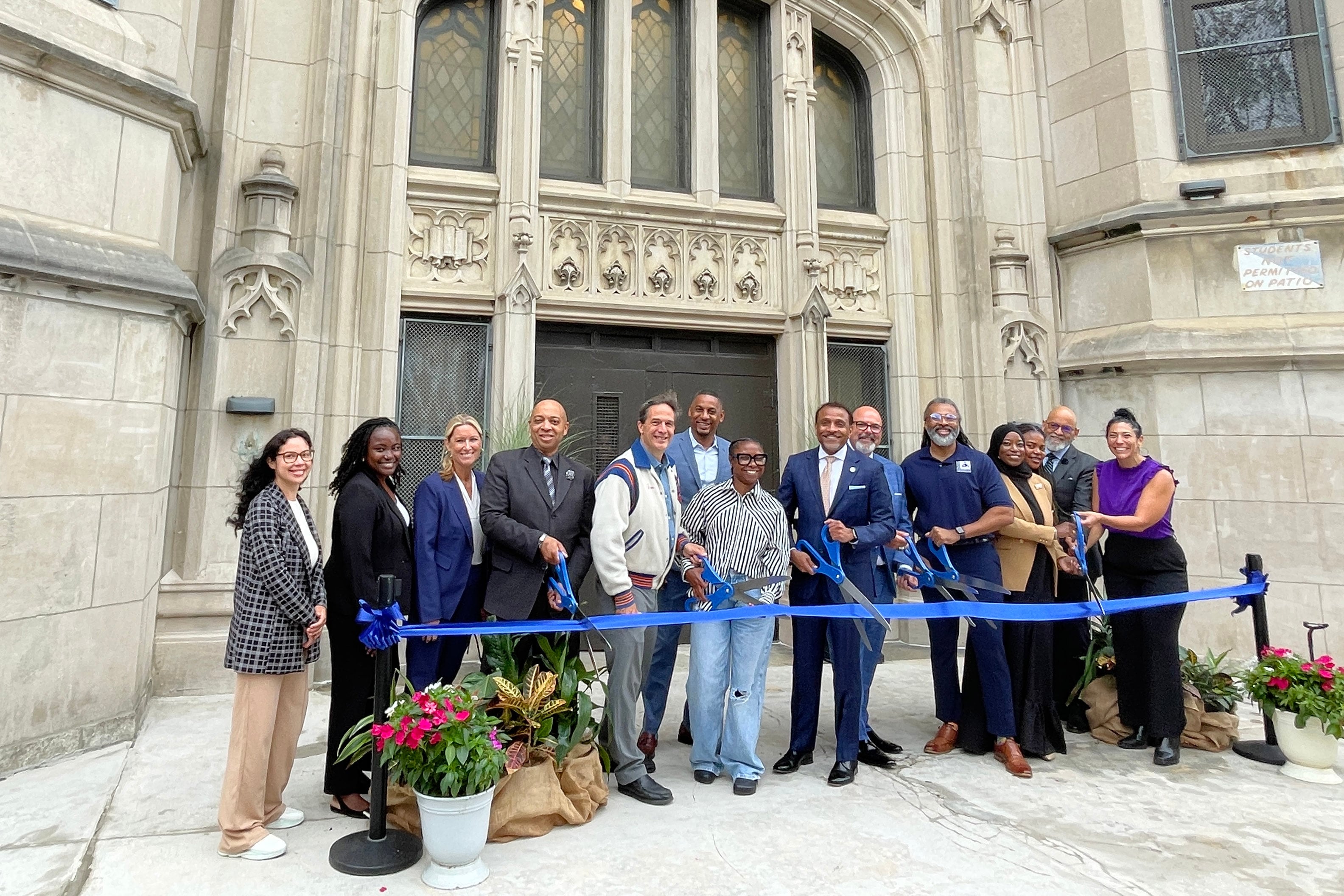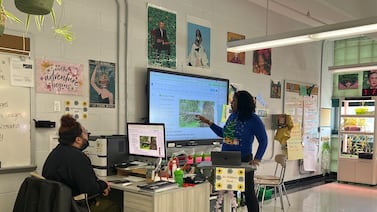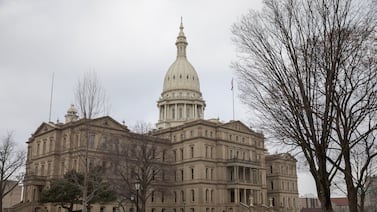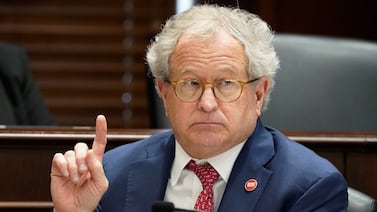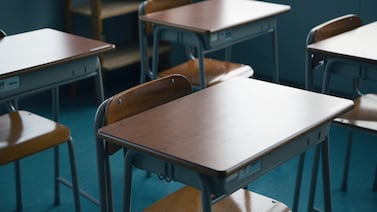Sign up for Chalkbeat Philadelphia’s free newsletter to keep up with the city’s public school system.
The Philadelphia school district reopened Frankford High School on Monday after completing a nearly $30 million renovation to remediate asbestos that had posed a health risk to staff and students.
The renovations, which included adding air conditioning and new lighting, kept the school closed for more than two years. The building’s reopening marks a big step for the district’s aim to modernize its aging infrastructure — and shows the great cost of maintaining buildings built more than a century ago.
The district has closed several schools in recent years due to concerns over exposure to asbestos. In June, the U.S. Department of Justice announced criminal charges against the district for failing to follow laws that require timely asbestos inspections between 2015 and 2023. The district reached an agreement with the Justice Department to avoid prosecution.
“We are reopening possibilities and opportunities for our students and our educators,” Board of Education President Reginald Streater told an audience of Frankford educators in the school’s refurbished auditorium on Monday. “When we open the doors this fall, our students return to a school that is safe, welcoming and healthy.”
In April 2023, inspectors found that asbestos had been flaking from the walls and ceiling of the 115-year-old Frankford High School building, posing a health risk to staff and students. Exposure to asbestos is associated with many health concerns, including lung cancer.
After the discovery, students attended class virtually through the end of the school year. For the following two school years, ninth graders attended class at nearby Roberto Clemente Middle School. Older students were restricted to part of the school called the “annex,” which was built in the 1950s.
“It was very stressful, and it was a little sad, just to see that we were closed because of the asbestos,” said physical education teacher Terry Ward. “But now to see it opening is amazing.”
Ward, who graduated from Frankford in the 1980s, said the school feels transformed from when she was a student. The building has freshly painted walls, new windows, refurbished floors, and new LED lighting. The district also installed more than 80 new air conditioning units and dozens of new Smartboards. Some rooms, like the cafeteria, have gotten new furniture as well.
Still, pieces of the school’s history remain. Stained glass windows circle the school’s auditorium, and old paintings line part of the first floor hallway.
When classes start next week, Ward will be teaching in the school’s third-floor gym. She said she remembers how hot the room would get during basketball practice when she was a student, with no cooling and windows that wouldn’t open. But with the new air conditioning, she said she looks forward to spending the school year teaching in the space.
“The kids’ eyes are going to be bright,” said Ward. “It brightens the community.”
District agrees to asbestos inspections every 6 months
The reopening of Frankford High School required the installation of wall and ceiling paneling throughout the building to protect the plaster beneath. In some areas, that plaster contains asbestos, which is only safe when it’s contained.
The district’s agreement with the Justice Department includes the district’s commitment to inspect buildings every six months and regularly repair any damage.
Adam Anderson, who teaches media and television classes at Frankford, has worked for the school since 2009. He said he’s aware that means he may have been exposed to asbestos particles during the years before the school closed, and has even talked to his doctor about it. But for now, he said, he’s not scared.
“Is it something that I’m gonna monitor for the rest of my life? Sure,” said Anderson. “Is it something that I’m thinking about at this moment? No, because I’m kind of just excited to be back in the building.”
To Anderson, the asbestos remediation has brought other benefits too. He used to worry about the creaky floorboards in his classroom, which would often disrupt students during recording sessions. But with refurbished floors, the classroom stays quiet.
The new space, he said, “actually represents what our students can do.”
After school officials cut a ribbon in front of the school’s main doors Monday, Frankford staff returned to their work of readying the school to welcome students on the first day of class Aug. 25. In an office upstairs, Yanelle Boyd, a student climate support staffer at the school, said one of her aims for the school year is to help infuse the school’s spirit into the renovated building.
Boyd graduated from Frankford in 2017, and remembers the hallways covered in student murals and trophies. Though the district says those items have mostly been preserved, they are no longer on prominent display.
“We have to make new memories — and I’m excited to make those new memories,” Boyd said.
Rebecca Redelmeier is a reporter at Chalkbeat Philadelphia. She writes about public schools, early childhood education, and issues that impact students, families, and educators across Philadelphia. Contact Rebecca at rredelmeier@chalkbeat.org.

